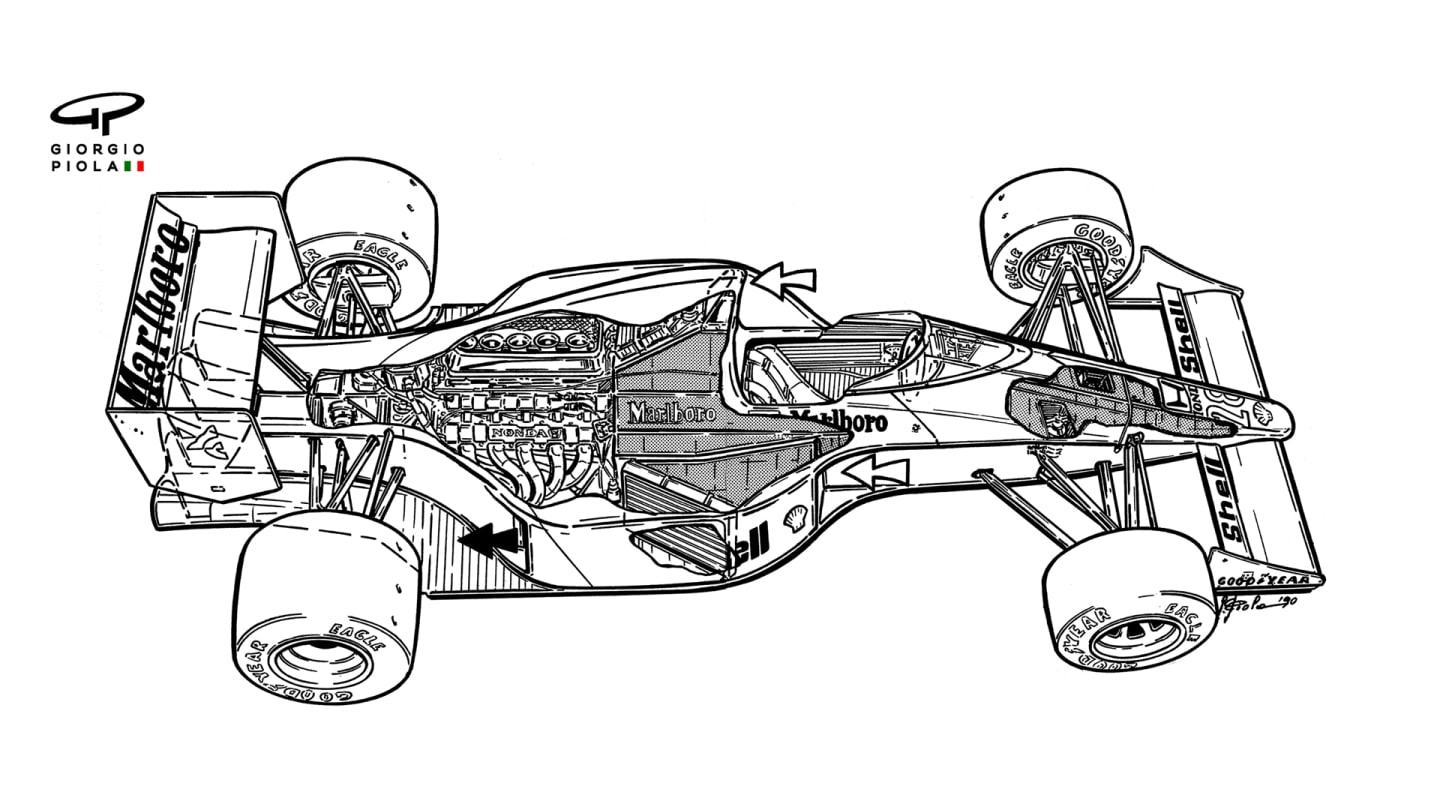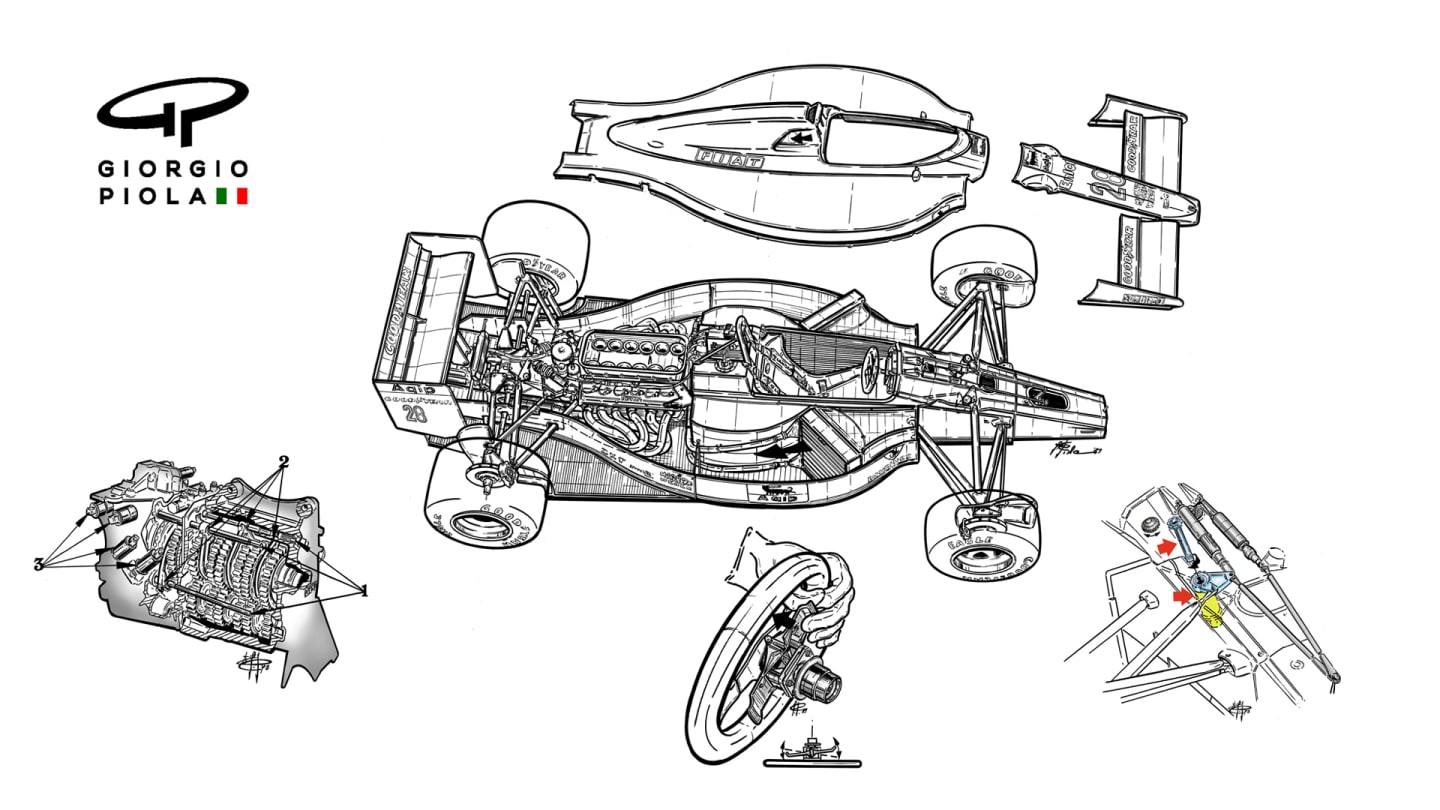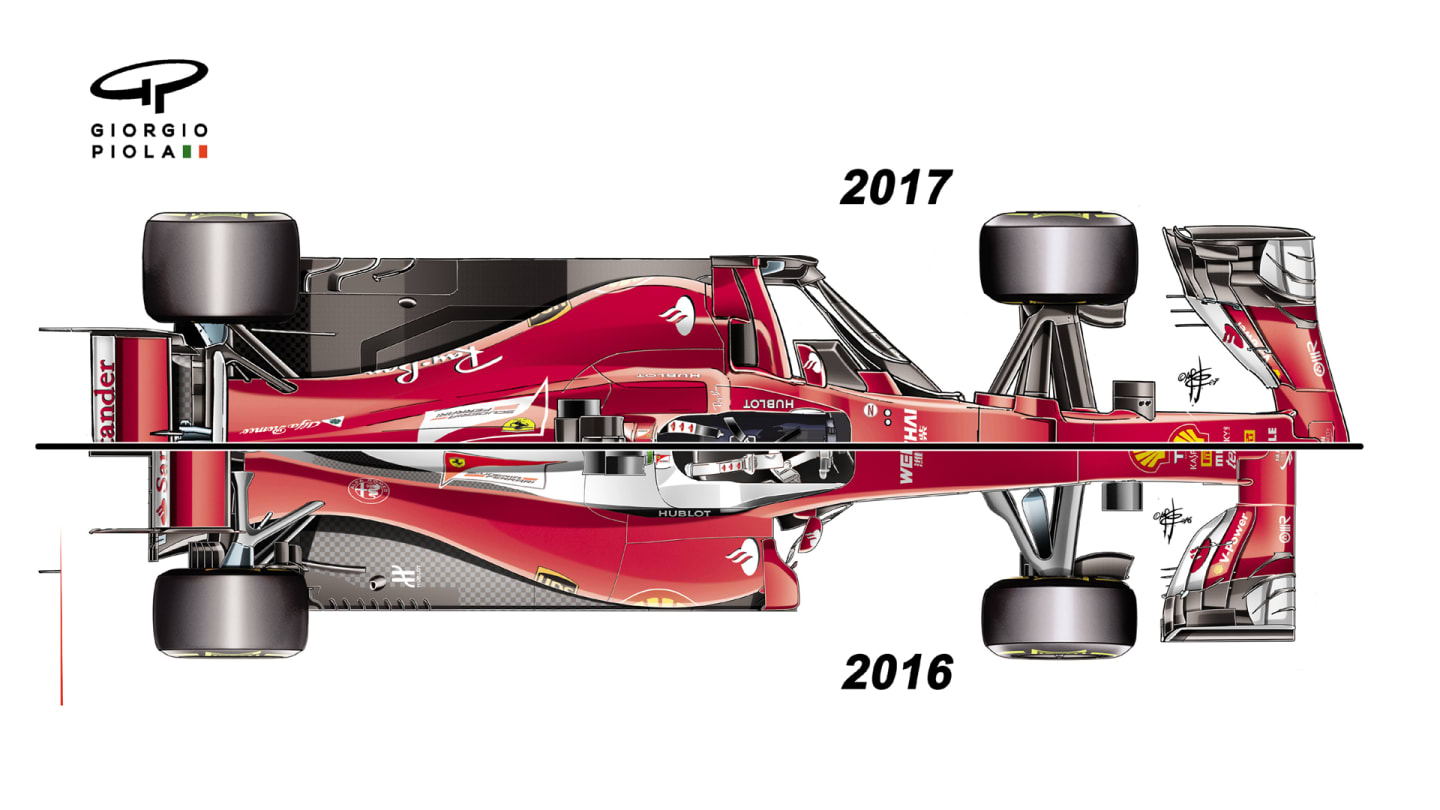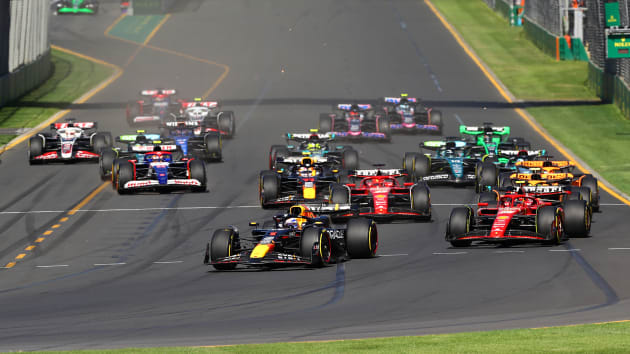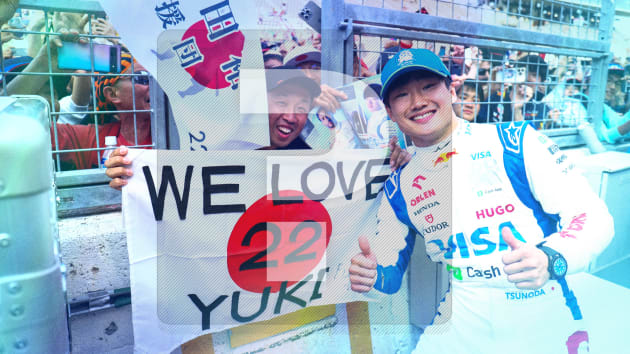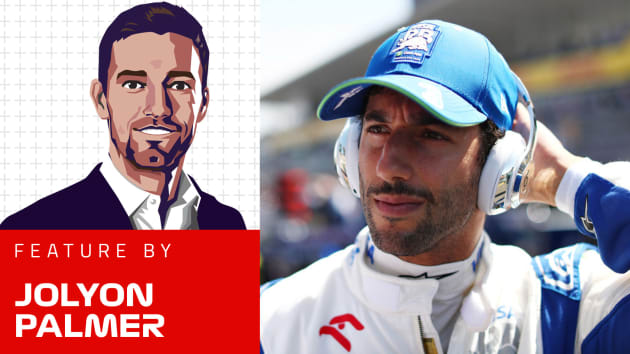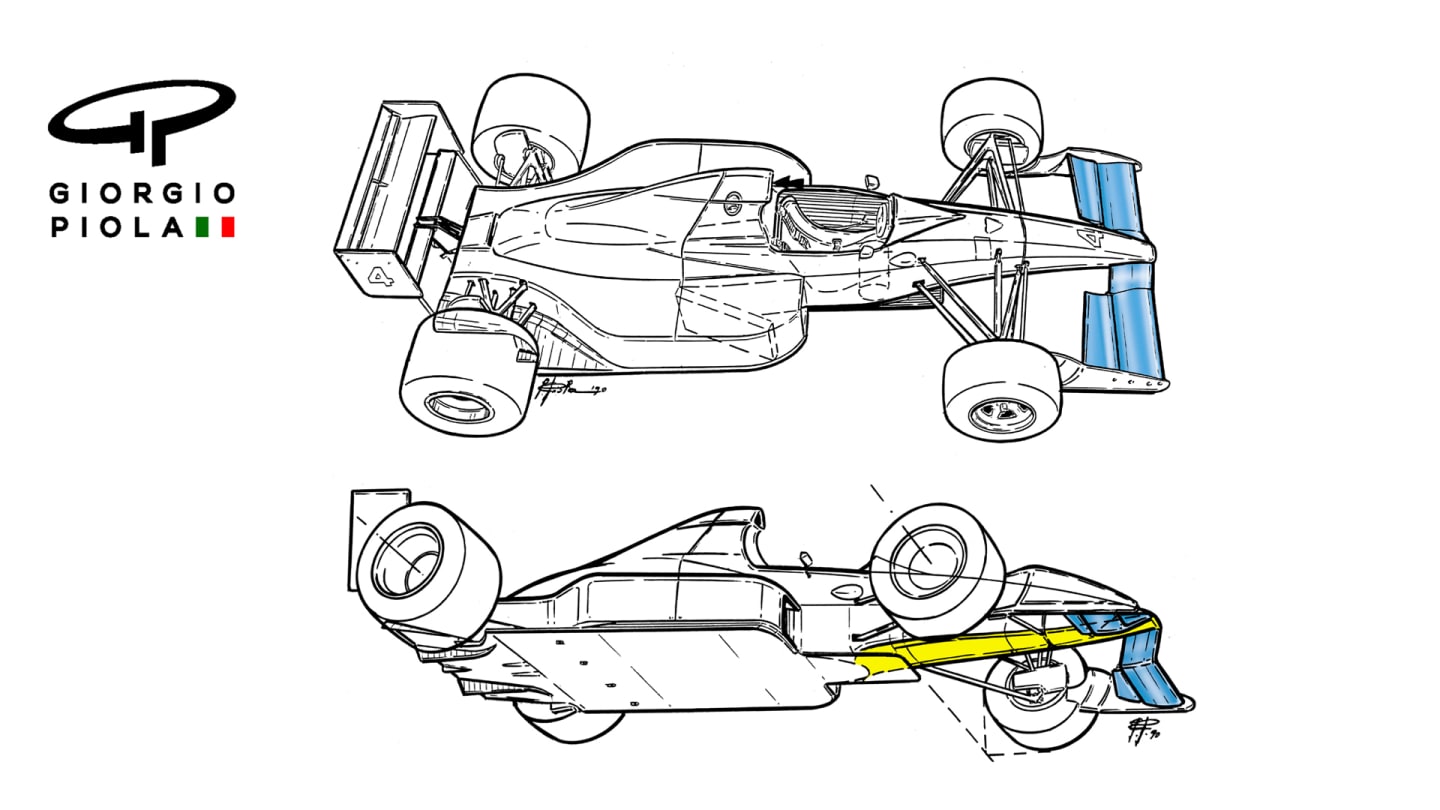
Technical
TECH TUESDAY: France flashback – how F1 looked in 1990
Share

Think a lot has changed in Formula 1 since the last French Grand Prix at Paul Ricard almost 30 years ago? It’s time to find out exactly how much, with the help of our tech team of Mark Hughes and Giorgio Piola…
The last time F1 visited Paul Ricard, venue for this weekend’s French Grand Prix, Mikhail Gorbachev and Margaret Thatcher were barely clinging onto power in Russia and the UK respectively, George Bush Sr was early into his Presidency of the USA and the Berlin Wall had only months-since been pulled down, bringing to an end the Cold War. It was July 1990 and McLaren’s Ayrton Senna and Ferrari’s Alain Prost were locked in battle for the F1 world title.
Formula 1 was bigger than it had ever been but much smaller than it would become. A top team would employ between 200-300 people compared to 1,000 or more today and would operate on a budget around one-tenth of that typically spent in 2018 (around £20 million rather than 200). There was only a tiny fraction of the computing power and basic data logging was in its infancy.
But although the 1990 F1 designer was more limited than his equivalent today by the resources and technologies available to him, he was much less constrained by the regulations, which became more intricate over time to control the speeds of the cars.
1 / 2
Senna's McLaren did not win in France, but it did win the 1990 title, despite the more advanced aerodynamics of some rivals © LAT Photographic
The McLaren MP4/5B was the title-winning car, but arguably not the most aerodynamically advanced. It was formidable because it had the most powerful engine – a 690bhp 3.5-litre Honda V10 – and was driven by Ayrton Senna. Around Suzuka it was around 9s slower than last year’s pole position time by Lewis Hamilton’s Mercedes W08, a car with over 40% more power from its turbo hybrid 1.6-litre V6 and around twice the downforce. This is despite conforming to much more restrictive aerodynamic regulations and weighing 728kg compared to the regulation minimum of 500kg in 1990.
The Honda in the back of Senna’s car was the highest-revving in the field, with its peak power delivered at 13,200rpm (around 450rpm higher than the V12 Ferrari despite bigger cylinders). Slightly higher numbers than this were achieved in qualifying with the help of special fuel brews. Because of the health risk, the fuel was mandated to be less chemically toxic from 1992 and from ‘95 a fuel ‘fingerprint’ had to be supplied to the FIA and homologated.
Despite the less volatile fuel, by 2006 smaller 2.4-litre V8s would be reaching 21,000rpm and an artificial rev limit of 19,000rpm was imposed by the FIA in order to control costs. With the current hybrids the rev limit is set at 15,000 but the regulation fuel flow limit means they rarely go much beyond 12,500.
1 / 2
Prost's France win was the second of three back-to-back victories for Ferrari © LAT Photographic
Although Prost’s V12-engined Ferrari 641 wasn’t quite as powerful as Senna’s McLaren-Honda, it was arguably more advanced. It featured a paddle-shift gearbox, a feature introduced by the team’s technical director John Barnard the year before and which would not be incorporated into the McLaren until later in the 1990 season. Senna’s Ricard-spec McLaren made do with a conventional H-pattern shift stick, obliging him to match the revs on downshifts with appropriate throttle blips and to drive one-handed when shifting. It also meant the cockpit had to be wider than the Ferrari’s to incorporate the gearstick. In years to come (from 2005), seamless shifting would be added, allowing upshifts where the next gear could be engaged before the current one was disengaged, so the power to the wheels was never interrupted.
Aerodynamically however, both cars were behind the state-of-the art – which was embodied by Adrian Newey’s Leyton House CG901 and Jean-Claude Migeot’s Tyrrell 019, both of which featured heavily raised noses to enhance the airflow to the underbody.
1 / 3
The innovative angled nose of the Tyrrell 019 can be clearly seen from below © Giorgio Piola
In 1990 aerodynamicists were just beginning to understand that there was a lot of untapped potential for downforce creation from the underfloor despite the imposition (in 1983) of the flat-floor, which had been regulated in (together with a ban on skirts) to banish ground-effect aerodynamics. Consequently, the McLaren and Ferrari were shaped with much more emphasis on the over-body airflow, the simple, elegant lines of both cars reflecting an attempt to turn the airflow gently around the cockpit and radiators, then accelerating it with the ‘coke bottle’ profile of the bodywork as it narrowed at the rear in order to enhance the flow to the rear wing and over the top of the diffuser. The ‘coke bottle’ remains a standard feature of F1 cars to this day, but the advent of barge boards to help turn the airflow more quickly and accelerate it more aggressively means that the simple elegance of the 1990 cars around the front has been lost.
The change in emphasis from over-body downforce to the more efficient underbody is reflected in the contrast in shape between the monocoques of the 1990 Ferrari 641 and last year’s SF70H model. Sidepod inlets tended to be narrow and tall to minimise the section change around the cockpit and radiators. Now the radiator inlets are tiny, reflecting the improvement in cooling efficiencies of radiators, the lower heat rejection of the engines and how the airflow is now accelerated much harder towards the inlets. What can also be seen is how the current carbon fibre tubs incorporate the bodywork rather than having separate panels over the top of the tub as in the 1990 car.
1 / 2
Here we can compare and contrast the 1990 Ferrari... © Giorgio Piola
Underbody downforce gains continued to be made even after the 1995 introduction of a stepped bottom floor – a regulation which remains in place today. A central ‘plank’ runs up the centre of the floor, with a 5mm step to the floor on either side. This reduces the ability of designers to run the whole floor super-close to the track and thereby induce more negative pressure. Regardless of the step, the current floors still generate vastly more negative pressure than the flat floors of 1990. Aerodynamicists now know how to feed that floor with accelerated airflow and they’ve been aided immeasurably in their understanding by the advent of computational fluid dynamics (CFD). In 1990 the wind tunnel allowed downforce and drag to be measured but couldn’t show how the numbers were derived. CFD (which was then in its infancy and being looked at by Geoff Willis at Leyton House as a research project) would allow a spectacular increase in understanding the mechanisms behind the numbers and how they could be manipulated.
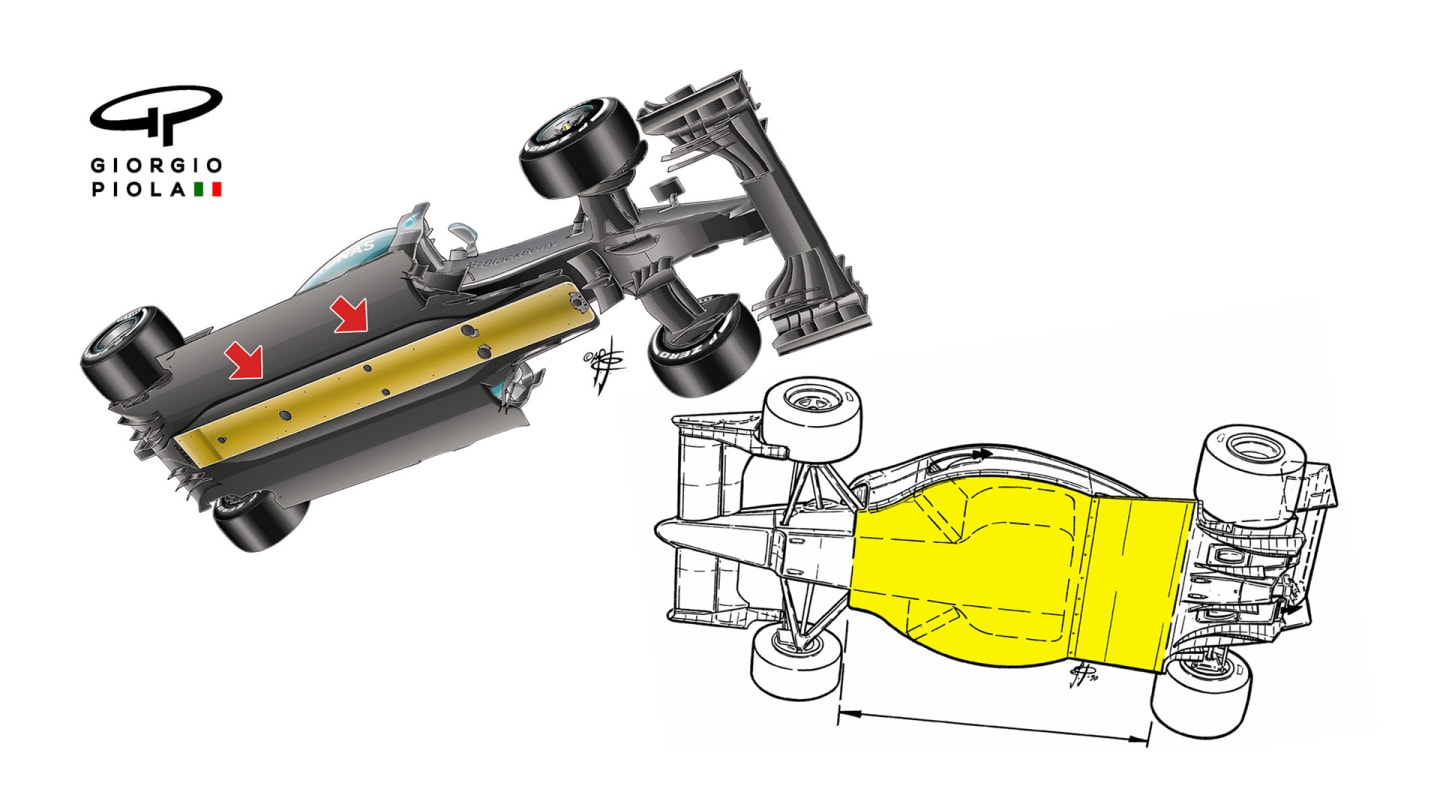
Flat-bottomed cars (right) were not replaced by stepped-bottom designs until 1995 © Giorgio Piola
This eventually led to the hugely complex front wings of today, which contrast sharply with the simple straight flaps of 1990 (although the Newey Leyton House did have some slight curvature in its endplates to better direct the air around the front tyres). The 3D shaping and multiple slot gaps of current wings generate vortices further down the car, accelerating the whole airflow as it makes its way down towards the back of the car. Today’s front wings generate more downforce from generating these vortices than they do from the wing flap itself.
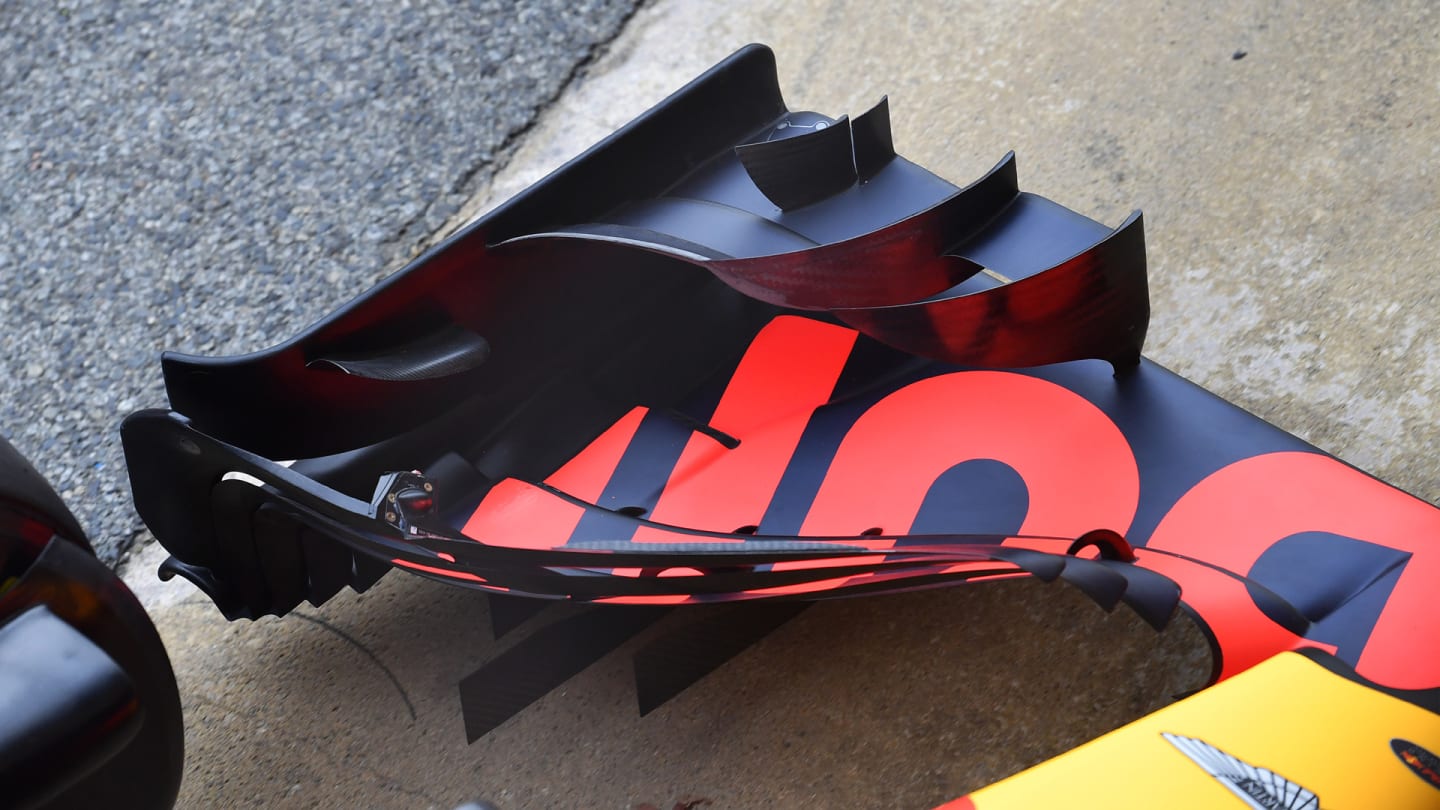
Red Bull Racing RB14 front wing detail © Sutton Images
Even by 1990 suspension layouts were becoming subservient to aerodynamic demands but the systems were more basic. Torsion bar springs were replacing coils as a much better packaging prospect. Third dampers to decouple the roll and pitch movements of the car had started to appear, but there were as yet no heave springs (decoupling the vertical forces) or inerters (to even out load variations). Active ride had been tried in the ‘80s but with basic analogue computing had fallen out of favour. Digital computing would bring the technology back with spectacular effect in 1992 before it was then banned (for ’94). Similarly, traction control had yet to make its appearance in 1990 (it was another couple of years away).
A lot has happened since that July day 28 years ago when Prost’s victorious Ferrari and Senna’s third-place McLaren were split by Ivan Capelli’s Newey-designed Leyton House, a car representing new knowledge that the big teams would incorporate soon enough, such is the spread of progress.

The start of the 1990 French Grand Prix © LAT Photographic
YOU MIGHT ALSO LIKE
News FIA and Formula 1 announce calendar for 2025
FeatureF1 Unlocked THIS WEEK IN F1: 10 tricky quiz questions on the Japanese Grand Prix
OpinionF1 Unlocked PALMER: This season was meant to be an audition for a Red Bull return, but is Ricciardo now under pressure at RB?
Podcast F1 NATION: Alonso’s Aston Martin decision and what it means for him – with Pedro de la Rosa and Damon Hill


